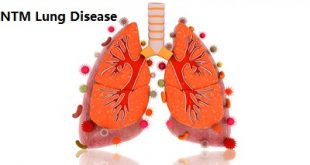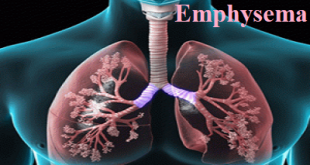What is NTM Lung Disease? Nontuberculous mycobacterial lung disease or NTM Lung Disease is a serious infection caused by bacteria that are common in the environment and can cause lung damage. Nontuberculous mycobacteria, shortened to NTM, are a type of bacteria found in water and soil. They are aerosolized, which means that the bacteria …
Read More »Emphysema – Pathophysiology, Complications, and Treatment.
What is emphysema? Emphysema is a lung condition that causes shortness of breath. In people with this condition, the air sacs in the lungs (alveoli) are damaged. Over time, the inner walls of the air sacs weaken and rupture — creating larger air spaces instead of many small ones. This …
Read More »Pulmonary Edema – Causes, Complications and Treatment
Definition Pulmonary edema occurs when the air sacs (alveoli) in your lungs fill with fluid. The fluid buildup makes it hard for the lungs to do their job, including getting oxygen from the air you breathe. This can make it hard to breathe. The most common cause of pulmonary edema …
Read More »Pleural Effusion – Symptoms, Risk factors and Management
Definition Pleural effusion is a build-up of excess fluid between the lining of the lungs and chest cavity. This lining is called the pleura. The area between the pleura is the pleural space. The body normally produces a small amount of fluid between the pleura to facilitate breathing. A pleural …
Read More »Chronic cough- Types, Complications, Causes and Prevention
Definition Chronic cough, when there is an irritant in the lungs, trachea, larynx, pharynx, nasal passages, or nose, the normal reaction of our body is to cough. It’s a result of our airway nerves sending a message to our brain. But once the airway has been cleared, the coughing should …
Read More »Pleurisy- Symptoms, Causes, Treatment and Prevention
Definition Pleurisy, also called pleuritis, inflammation of the pleura, the membranes that line the thoracic cavity and fold in to cover the lungs. Pleurisy may be characterized as dry or wet. In dry pleurisy, little or no abnormal fluid accumulates in the pleural cavity, and the inflamed surfaces of the …
Read More »Pulmonary Embolism (PE)- Causes, Risk factors, and Diagnosis.
Definition A pulmonary embolism (PE) is a blood clot that develops in a blood vessel in the body (often in the leg). It then travels to a lung artery where it suddenly blocks blood flow. A blood clot that forms in a blood vessel in one area of the body …
Read More »Hypersensitivity Pneumonitis – Risk factors and Prevention.
Description – Hypersensitivity Pneumonitis Hypersensitivity pneumonitis (HP), also called extrinsic allergic alveolitis, is a respiratory syndrome involving the lung parenchyma and specifically the alveoli, terminal bronchioli, and alveolar interstitium, due to a delayed allergic reaction. Such reaction is secondary to a repeated and prolonged inhalation of different types of organic …
Read More » Diseases Treatments Dictionary This is complete solution to read all diseases treatments Which covers Prevention, Causes, Symptoms, Medical Terms, Drugs, Prescription, Natural Remedies with cures and Treatments. Most of the common diseases were listed in names, split with categories.
Diseases Treatments Dictionary This is complete solution to read all diseases treatments Which covers Prevention, Causes, Symptoms, Medical Terms, Drugs, Prescription, Natural Remedies with cures and Treatments. Most of the common diseases were listed in names, split with categories.








